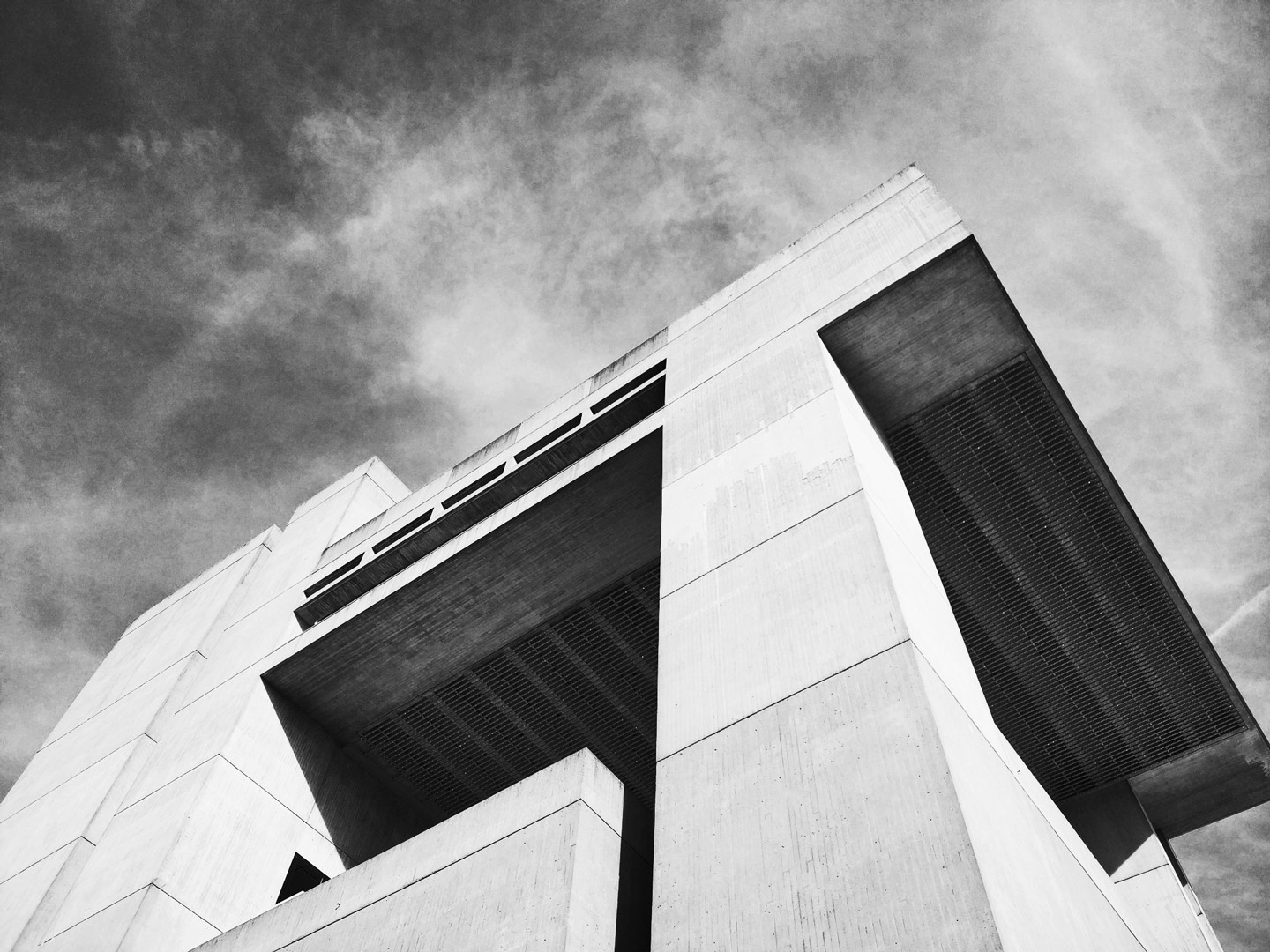
Strength
In simplicity
An architectural style that emerged in the mid-20s is based in brute and unadorned use of concrete.
Named by the French term béton brut, or brute concrete, Brutalism became popular in the post-WWII era, when the need for affordable housing and public buildings led to the widespread use of concrete.
Brutalists are celebrated FOR their geometric forms and the use of concrete
Le Corbusier
Charles-Édouard Jeanneret, known as Le Corbusier, was a Swiss-French architect, designer, painter, urban planner, writer, and one of the pioneers of what is now regarded as modern architecture.
Alison and Peter Smithson
Alison M. Smithson and Peter D. Smithson were English architects who formed an architectural partnership and are associated with Brutalism, especially in architectural and urban theory.
Louis Kahn
Louis Isadore Kahn was an Estonian-born American architect based in Philadelphia. After working in various capacities for several firms in Philadelphia, he founded his own atelier in 1935.
⊕
Six most appreciated Brutalist buildings
Brutalism was also influenced by Bauhaus school, which emphasized functionalism and simplicity in design.
-
More or Less
Brutalist architecture is not Soviet, but it did reach Soviet architecture in the 1970s1. Brutalism is an architectural style that emerged in the 1950s and became popular in the 1960s and 1970s2. It is characterized by large, monolithic, angular forms and is noted for its heavy use of exposed concrete and raw materials2. Soviet Brutalist buildings were bold…
-
Who was Le Corbusier
Charles-Édouard Jeanneret (6 October 1887 – 27 August 1965), known as Le Corbusier ɔʁbyzje) was a Swiss-French architect, designer, painter, urban planner and writer, who was one of the pioneers of what is now regarded as modern architecture. He was born in Switzerland to French speaking Swiss parents, and acquired French nationality by naturalization on…